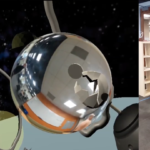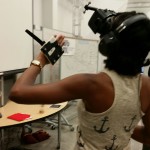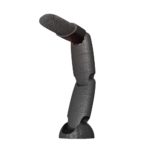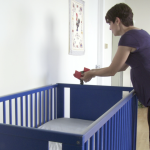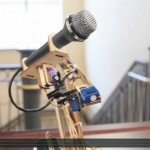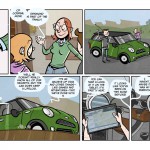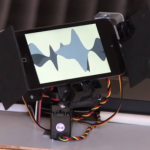Project Overview: In an effort to understand how immersive design tools may impact the future of design and creative work, I led a project in USC’s Mobile & Environmental Media Lab in partnership with the Steelcase Workspace Futures group. The research involved fieldwork with VR designers and industrial designers. The insights we gathered helped inspire a series… Read more »
June 10, 2017
During my time at Intel Labs I researched immersive narrative opportunities for Scott Westerfeld’s Leviathan triology. As part of this process, I led immersive concept ideation sessions for Alex McDowell’s World Building Media Lab (WBMl). I facilitated the WBMl team in exploring a range of character perspectives that an immersive story experience could take in VR. One of the key… Read more »
April 29, 2016
As part of an exploration of the AudienceBot microphone concept, I wrote a dystopian science fiction screenplay for a short film called American Agora. I created a 3D model for this project and tested it in this short sequence.
LoveLog is a Sloan awarded short film about love and augmented reality. The story explores new opportunities to record our memories colliding with the messy reality of romantic relationships. Young lovers Felix and Sadie never take off their augmented reality (AR) glasses and constantly record video of their lives as they tag and catalog their memories using… Read more »
December 17, 2015
Baby’s First Touch Screen is a design fiction short I made about a touch screen that doesn’t want to be touched. If a user attempts to touch the device too quickly, two shielding appendages close. In this short scenario, an expectant mother is devastated when her newly purchased “Baby’s First Touch Screen” device is stolen by a… Read more »
December 15, 2015
The AudienceBot Microphone is an interactive platform that enables audiences to convey feedback to performers in real-time. Using a mobile application audience participants collectively determine the “mood” of the microphone. The microphone utilizes six servo motors and a motion tracking device to express a range of affective states, from inattentive to attentive and from playful… Read more »
November 3, 2014
(2010) Collaboration with Michael Annetta. This design uses XML data from NAVTEQ to translate daily traffic flow at particular road sections into a rhythmic pulses that maps onto PWM voltage for vibrating motors. By the year 2060, all the humans who survived peak-oil live in giant honeycomb-like structures that contain self-sustaining mini-ecologies within each geodesic… Read more »
February 8, 2012
Designed as a critique of status monitoring in online contexts, this project presents a prototype of a prosthetic device that conversation partners wear in their mouths to provide visual and auditory feedback about the speaker’s level of online popularity (measured in retweets). The speaker with more current retweets experiences voice amplification (and their mouth glows… Read more »
This project extended our work with automotive lifelogging by using in-car sensors to engage drivers in ongoing discoveries about their vehicle, driving environment, and social context throughout the lifecycle of their car. A goal of the design was to extend the contexts of automotive user-interface design by (1) looking inward to the imagined “character” of… Read more »
Completed for Phil van Allen’s New Ecologies of Things course at the Art Center, this project presents prospective interactants with a touch interface that doesn’t “want” to be touched. When touch screen interface devices are found in the wild, their shielding appendages haven’t been clipped yet. As you might expect, these appendages have to be… Read more »
February 7, 2012
